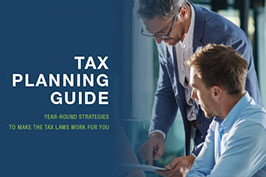Paycheck Protection Program (PPP) Loan Audits: Everything you need to know
In March of 2020, Congress passed the CARES Act to provide financial relief to individuals, state and local governments, public health, and businesses affected by the COVID-19 pandemic. Of that money, $377 billion was allocated for small businesses, with the main features being emergency grants and forgivable loans, known as the Paycheck Protection Program. You may have also heard it referred to as the SBA program, because the Small Business Association is overseeing the loan process.
Since this first round of funding was depleted within a matter of days, there were some unexpected consequences, including loan approval given to some large companies who did not need the money. To correct that issue as well as ensure that the money is being used for its intended purpose, it has been announced that there will be PPP loan audits.
Any loan over $2 million will be audited and there will be spot checks on loans of lesser amounts. The audits will be performed by the SBA’s Office of Inspector General to verify that the business meets the forgiveness qualifications, and that claims made when the business applied for the loans were accurate.
Testimonial
What you need to avoid
According to the PPP rules, the forgiveness qualifications are that at least 75% of the loan amount must be allocated toward payroll costs, and the remainder toward mortgage interest, rent, existing debt and utilities.
To avoid being audited or not qualifying for loan forgiveness, make sure to adhere to these specific PPP rules when calculating the loan amount:
- Independent contractor payments can not be included in payroll costs
- Owner draws do not count toward payroll costs
- Individual compensation is capped at $100,000 per employee
Although the lender is technically responsible for verifying the claimed loan amount based on back-up documentation, the borrower bears the responsibility. Loan forgiveness depends on the accuracy of the claims made during the application as well as the actual dispensation of the money.
Another important factor contributing to qualifying for loan forgiveness is how long you have to use PPP funds. According to the Treasury Department, the business owner must spend PPP funding within eight weeks of the date the funds were deposited into the business owner’s bank account.
CTA – Your tax planning guide

Still have questions? Get guidance here
This program can be a lifeline to a business owner and their employees, but it’s important that when filing a loan application and spending the money that you adhere closely to the guidelines. Unlike amending tax returns because you missed something, you don’t get a second chance to qualify for loan forgiveness.
Want to make sure you’re covered? The professionals at GYL are here to help you get it right the first time. Call or click for a free consultation today.
